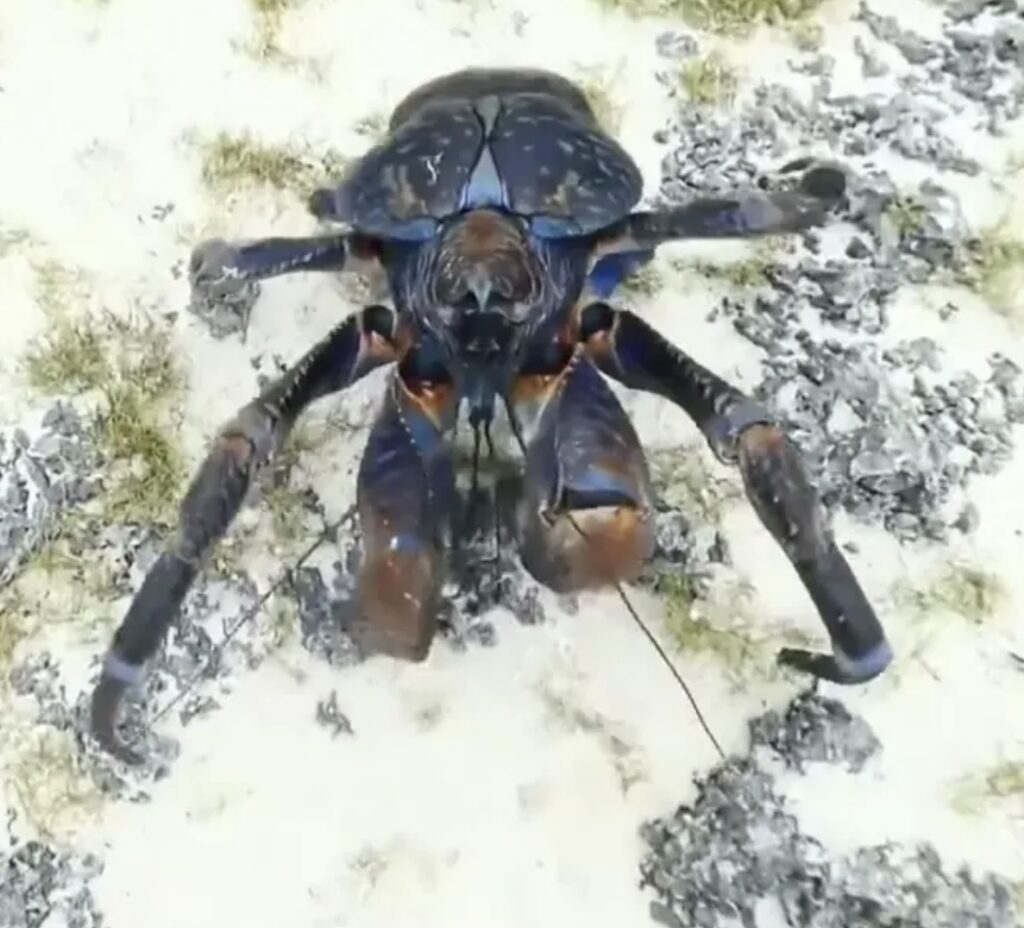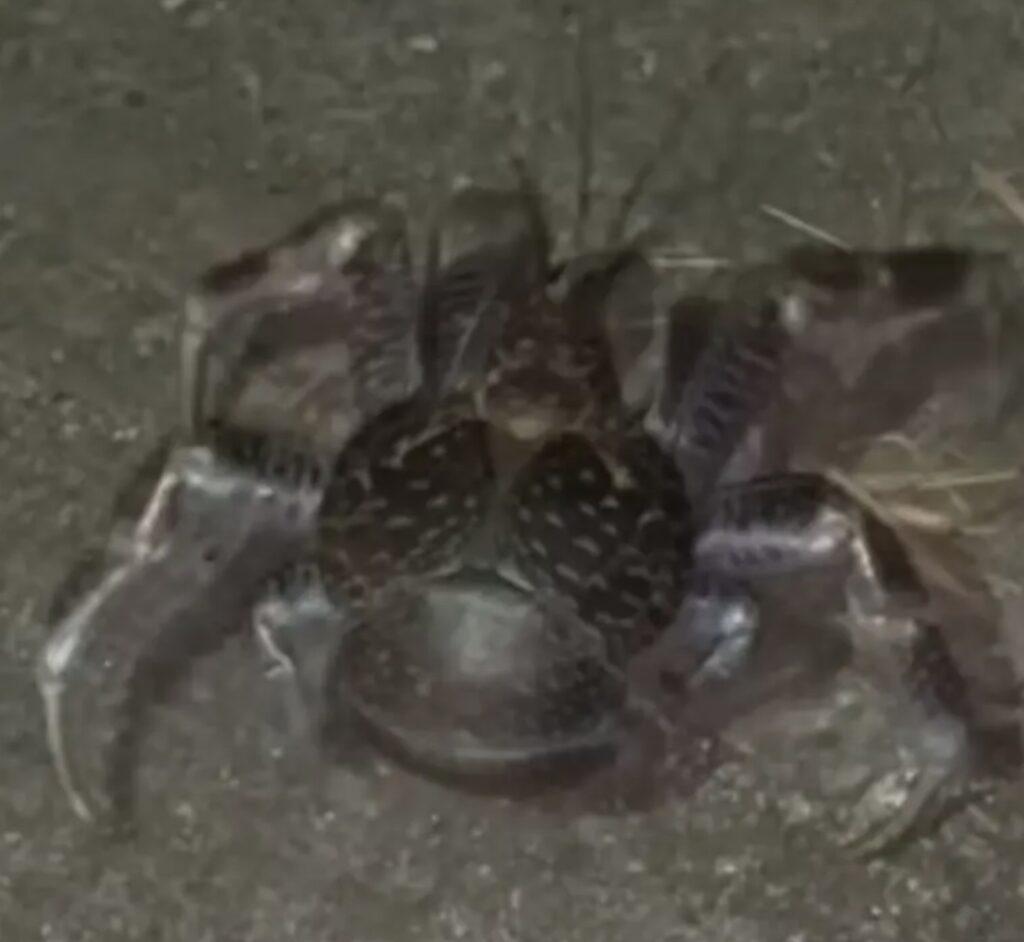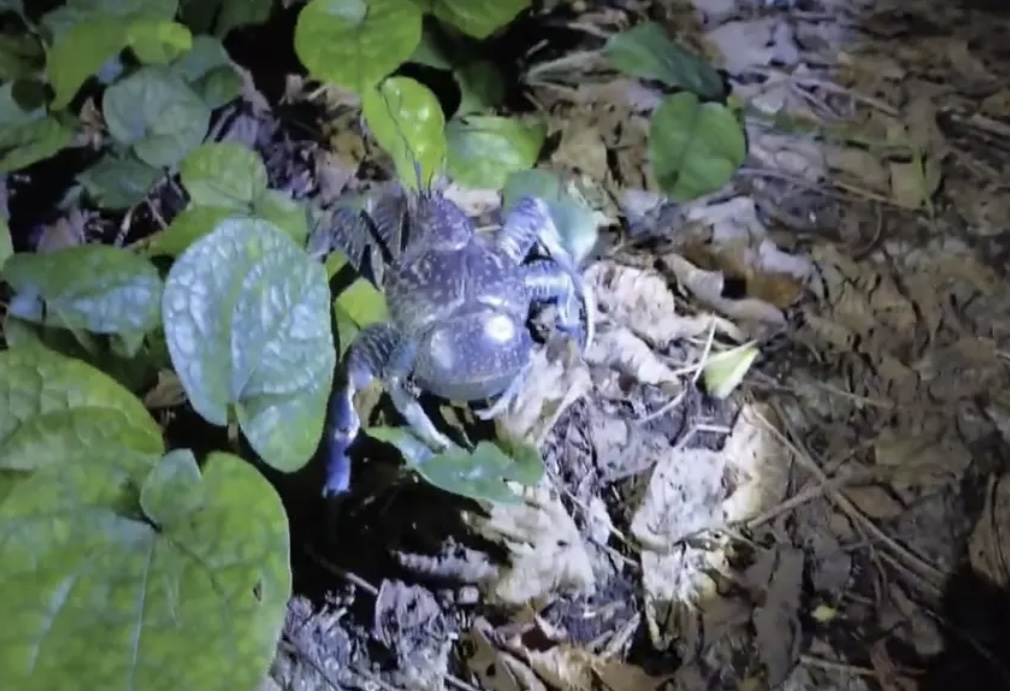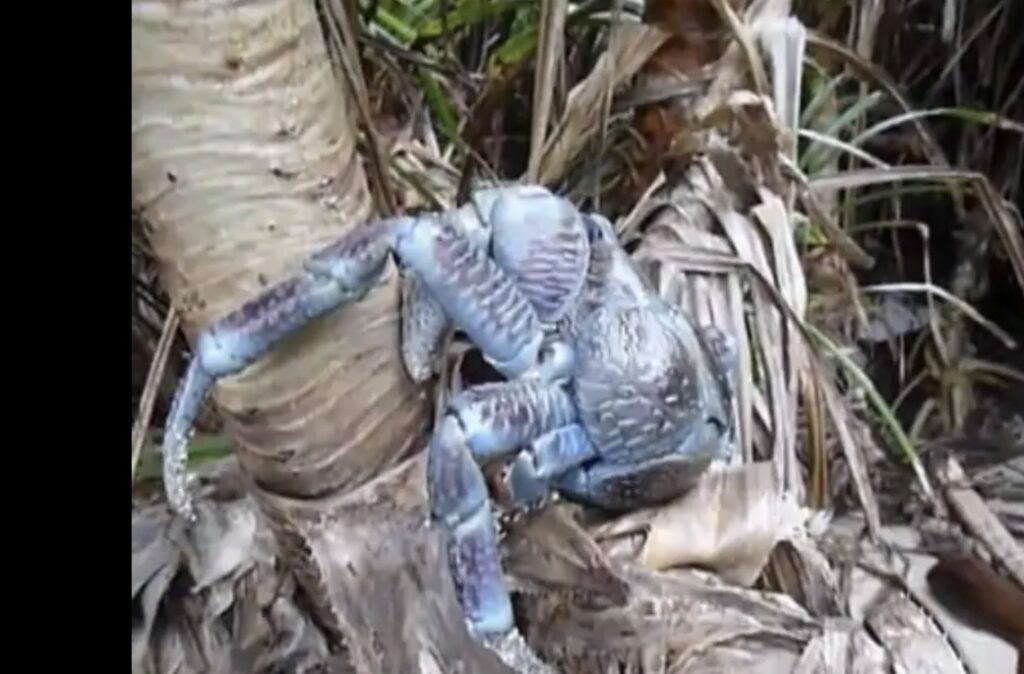
What is a Coconut Crab?
The coconut crab (Birgus latro) is a large terrestrial crustacean and is known as the world’s largest land-dwelling arthropod. It mainly inhabits the islands of the Southwest Islands of Japan and the South Pacific. As its name suggests, the coconut crab feeds on coconuts, which is how it got its name.

Ecology and Behavior of the Coconut Crab
Coconut crabs live primarily on land and are nocturnal, hiding in burrows or under rocks during the day. Their breeding season typically runs from October to November. During this period, on nights with high tide after 10 PM, they can be seen moving toward the beach. This behavior is to release their hatched offspring into the sea. Therefore, the best time to observe them is during high tide at night in the breeding season.

Observing Coconut Crabs in Miyakojima
In Miyakojima, coconut crabs inhabit its rich natural environments. To observe them, the best chance is late at night on the beach during the breeding season. However, their population is declining, and they are listed as Vulnerable (VU) on the Ministry of the Environment’s Red List. Coconut crabs are a vital part of the local ecosystem and hold immense academic and cultural value.

Conservation of Coconut Crabs in Miyakojima
To protect the species, the city of Miyakojima passed a conservation ordinance in the regular assembly of December 2011, which was enacted on January 10, 2012. This ordinance completely prohibits the capture of coconut crabs in Miyakojima. From an environmental protection standpoint, coconut crabs are critically important, and efforts to conserve them must continue.

Conclusion
Observing coconut crabs in Miyakojima offers a wonderful opportunity to appreciate the richness of nature. However, it’s essential to understand the importance of their conservation and to follow proper etiquette. To avoid overharvesting and human impact, observations should be conducted with care and with respect for the natural environment.

We hope this explanation helps deepen your understanding of the coconut crab in Miyakojima.







最近のコメント